Key takeaways
- Virtual field trips enhance accessibility, allowing all students to participate regardless of physical limitations.
- Using interactive tools and multimedia resources fosters engagement and creates memorable learning experiences.
- Planning and preparation are crucial for a successful virtual field trip, ensuring smooth execution and meaningful interaction.
- Reflecting on the experience helps improve future trips, emphasizing the importance of student comfort in sharing insights.
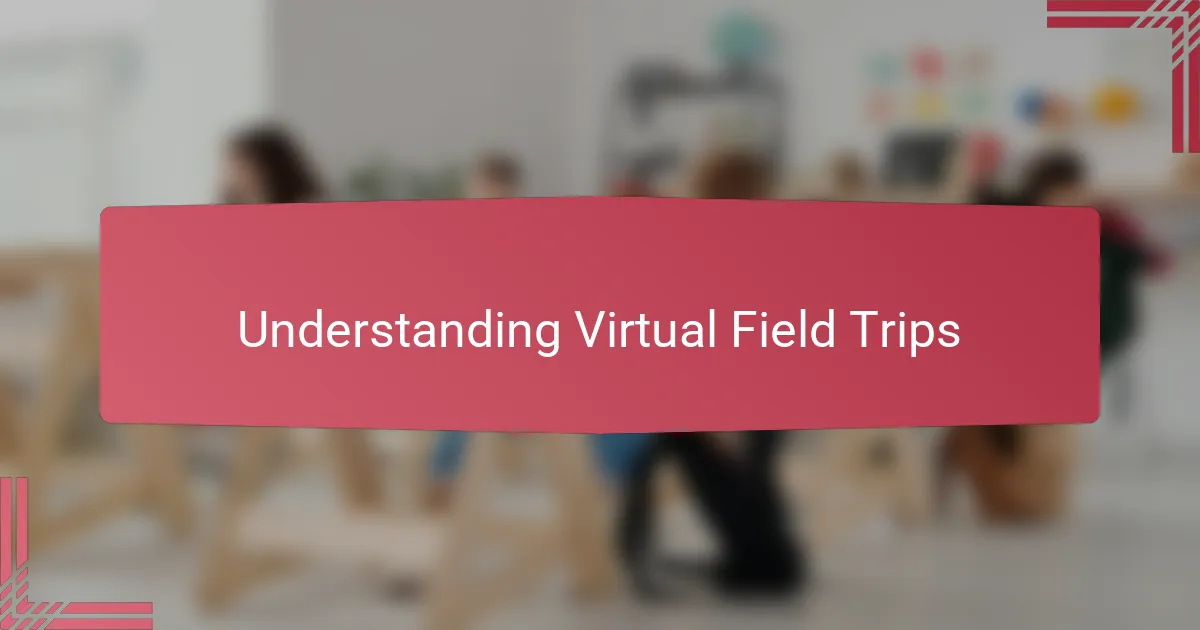
Understanding Virtual Field Trips
Virtual field trips are more than just a digital tour; they are gateways to experiences that might otherwise be out of reach for many students. I remember setting one up and feeling a mix of excitement and nervousness—would the technology hold up, and would the students be as engaged as they would be on a real trip? What I found was that virtual trips can create moments of wonder just as powerful, connecting students to new ideas and places in ways that felt fresh and meaningful.
When I first planned a virtual field trip, I realized it required thoughtful curation of resources to ensure it wasn’t just passive watching but an active learning experience. How do we keep curiosity alive when screens can so easily encourage distraction? Integrating interactive elements and discussions made all the difference, turning the virtual visit into a shared adventure rather than a distant broadcast.
Ultimately, understanding virtual field trips means recognizing their unique potential and limitations. They challenge us to rethink how we bring the world into our classrooms and ask: What can technology offer that traditional field trips cannot? This perspective has shaped how I approach lesson planning, emphasizing creative engagement over mere content delivery.
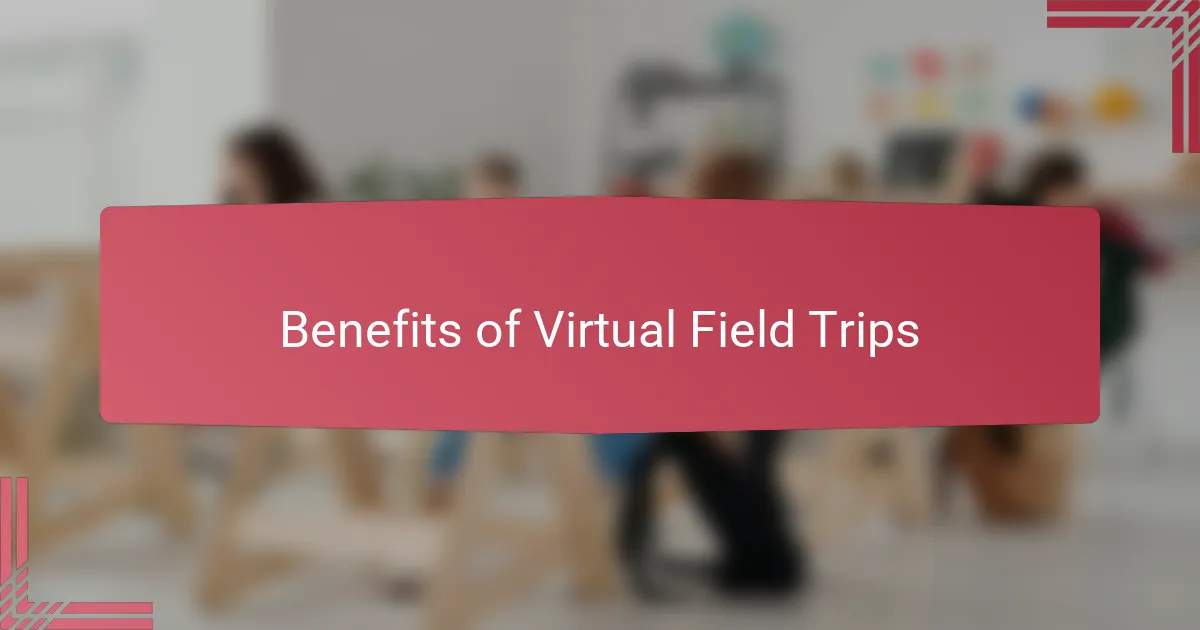
Benefits of Virtual Field Trips
One of the biggest benefits I noticed right away is accessibility. Suddenly, students who’d never been able to join a physical field trip—whether because of distance, cost, or mobility issues—could all be there together, exploring places from a museum in another country to a local community garden. Doesn’t it feel empowering that technology can break down these barriers and invite every learner to participate fully?
Another advantage is the level of control and flexibility virtual trips offer. I found myself pausing, replaying, or diving deeper into specific topics whenever curiosity sparked, something nearly impossible on a traditional bus ride. Isn’t it amazing to watch students actively shape their own learning journeys, asking questions in real time or reflecting thoughtfully without the usual classroom distractions?
Finally, virtual field trips can surprisingly deepen engagement by connecting with students in their comfort zones. I recall a shy student who rarely spoke up suddenly lighting up, pointing out details she noticed on screen. Could it be that being in a familiar space helps some learners feel brave enough to share insights? This made me rethink not only where but how we can encourage participation in activist education.
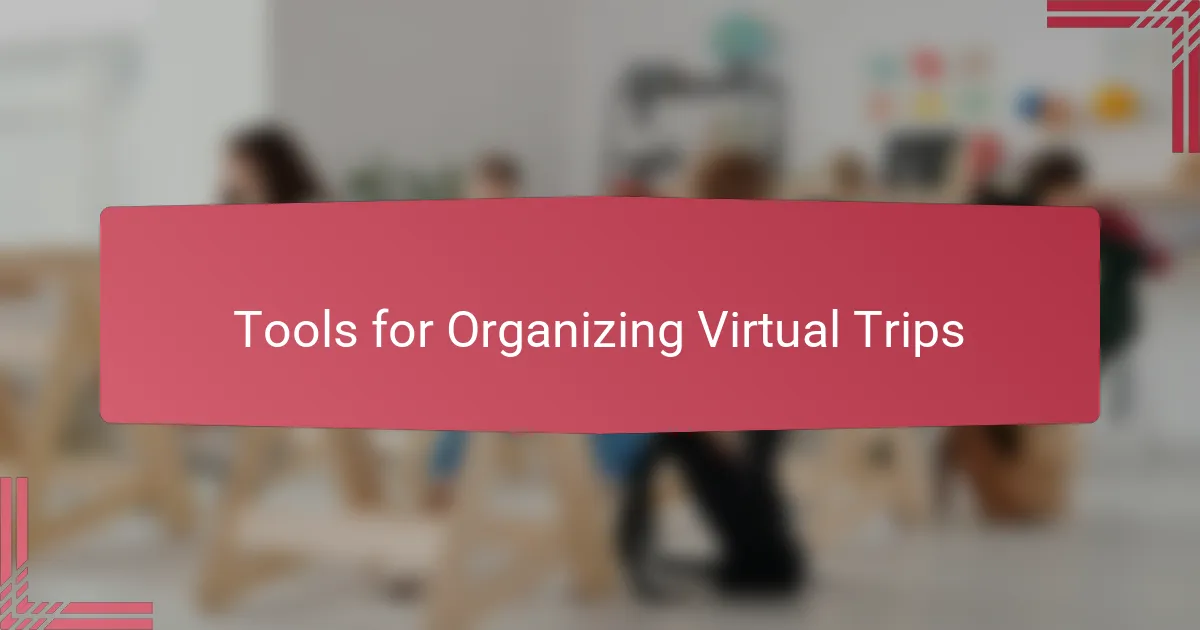
Tools for Organizing Virtual Trips
When I first dove into organizing virtual field trips, choosing the right tools felt like navigating a maze. Video conferencing platforms such as Zoom or Google Meet became my go-to because they allowed real-time interaction; this kept students engaged rather than passively watching. Have you ever noticed how a simple chat box or breakout room can transform a flat screen experience into lively, thoughtful conversations?
In addition to live sessions, incorporating multimedia resources like interactive maps or virtual museum tours made the trip feel tangible and memorable. I used platforms like Google Earth to ‘fly’ over habitats we were studying, which sparked genuine excitement. It’s moments like these that remind me how the right tools do more than just show—they invite curiosity and participation.
I also discovered that organization apps and collaborative tools played a big role in keeping everything smooth. Using Trello to plan the itinerary and share resources with students beforehand helped reduce last-minute chaos and gave learners a chance to prepare questions. Doesn’t having a well-structured plan make the whole virtual adventure feel less daunting and more empowering?
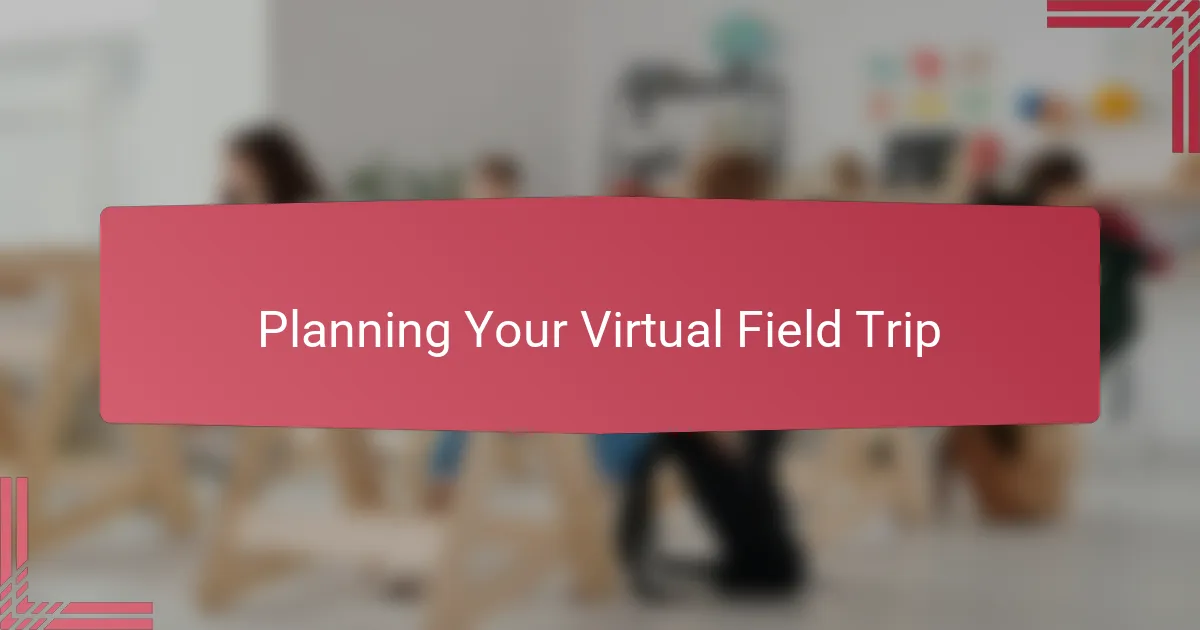
Planning Your Virtual Field Trip
Planning your virtual field trip starts with choosing a focus that truly resonates with your students and the activist themes you want to explore. I remember feeling overwhelmed at first—there are so many incredible topics out there—but narrowing it down helped me design a meaningful experience rather than a scattered one. What stories or issues do you want your students to connect with deeply?
Next, I found it essential to map out a clear itinerary that balances content delivery with interaction. It’s tempting to cram as much as possible into the session, but pacing matters. How can you build in pauses for reflection, questions, and discussions that give students space to process and engage authentically?
Finally, coordinating technical details ahead of time saved me from scrambling later. Checking that links worked, prepping backup plans, and sharing guidelines with students beforehand made a huge difference. Have you ever noticed how feeling prepared can ease nerves and create a more confident, smooth experience for everyone involved?
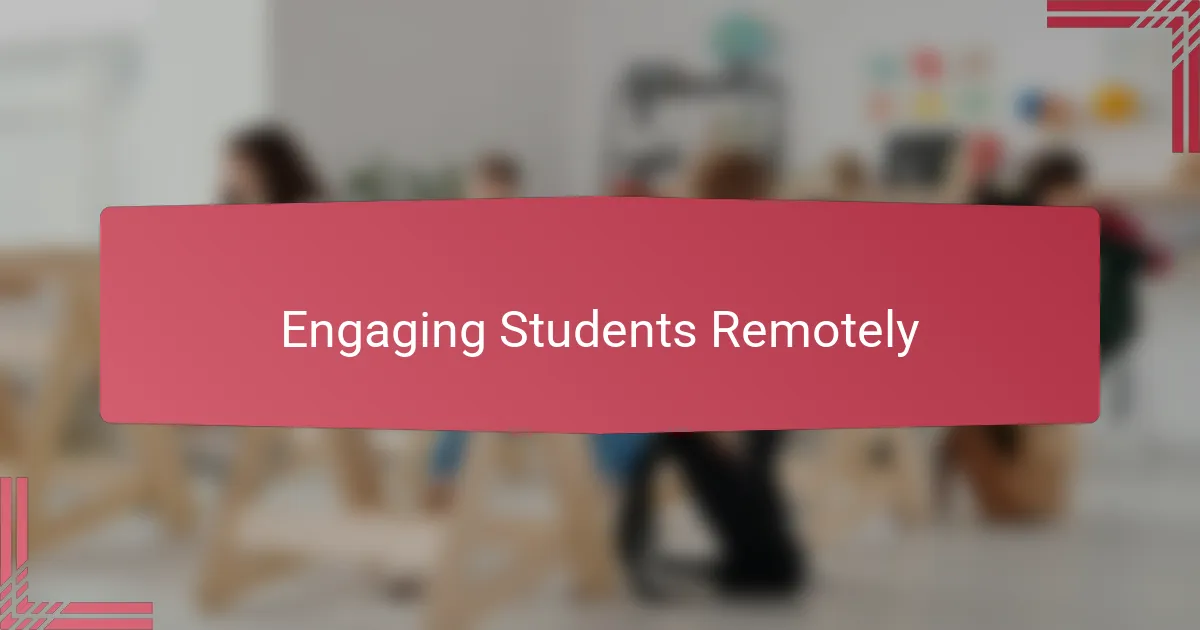
Engaging Students Remotely
Keeping students engaged remotely felt like trying to catch fireflies in a jar—delicate but possible with the right approach. I quickly learned that injecting moments for student voices, like open-ended questions or live polls, transformed passive watchers into active explorers. Have you ever noticed how a simple question can spark a burst of energy on a silent screen?
I also found that mixing up the format kept things fresh. Short videos followed by breakout discussions or quick collaborative tasks helped combat Zoom fatigue and kept curiosity alive. Isn’t it interesting how variety not only holds attention but also makes the learning feel more real despite the distance?
Sometimes, it was the small, unexpected interactions that made the biggest difference. Watching a student suddenly light up to share a personal connection or insight reminded me that engagement isn’t just about design—it’s about creating space for genuine connection, even through a screen. How often do we underestimate the power of these quiet breakthroughs?
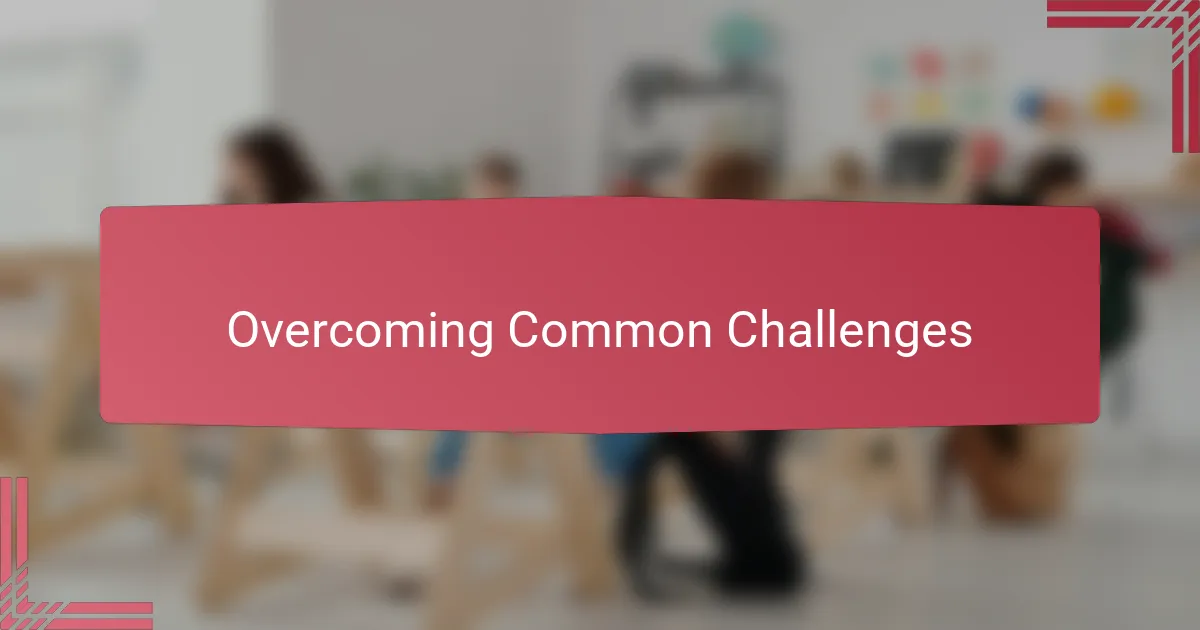
Overcoming Common Challenges
Technical hiccups were definitely one of the first challenges I faced. During one session, the video froze right at a crucial moment, and I could feel my heart race—how do you keep momentum when technology lets you down? What helped me was having backup materials ready and involving students in a quick discussion or reflection while resolving the issue. That little pause became an unexpected chance for deeper conversation instead of just frustration.
Another common obstacle is managing student attention across screens. I remember one trip where the chat went silent, and I wondered if I’d lost everyone’s interest. But by inviting students to share their own questions and observations aloud, I turned that quiet into lively participation. Isn’t it fascinating how sometimes slowing down and creating space for voices to emerge can overcome the noise of distraction?
Finally, balancing accessibility and engagement can feel like walking a tightrope. At times, some students struggled with connectivity or unfamiliar platforms, which made me question if everyone was truly included. Offering clear instructions beforehand and checking in individually helped me bridge those gaps. Have you found that patience and flexibility are the real keys to overcoming these digital divides?
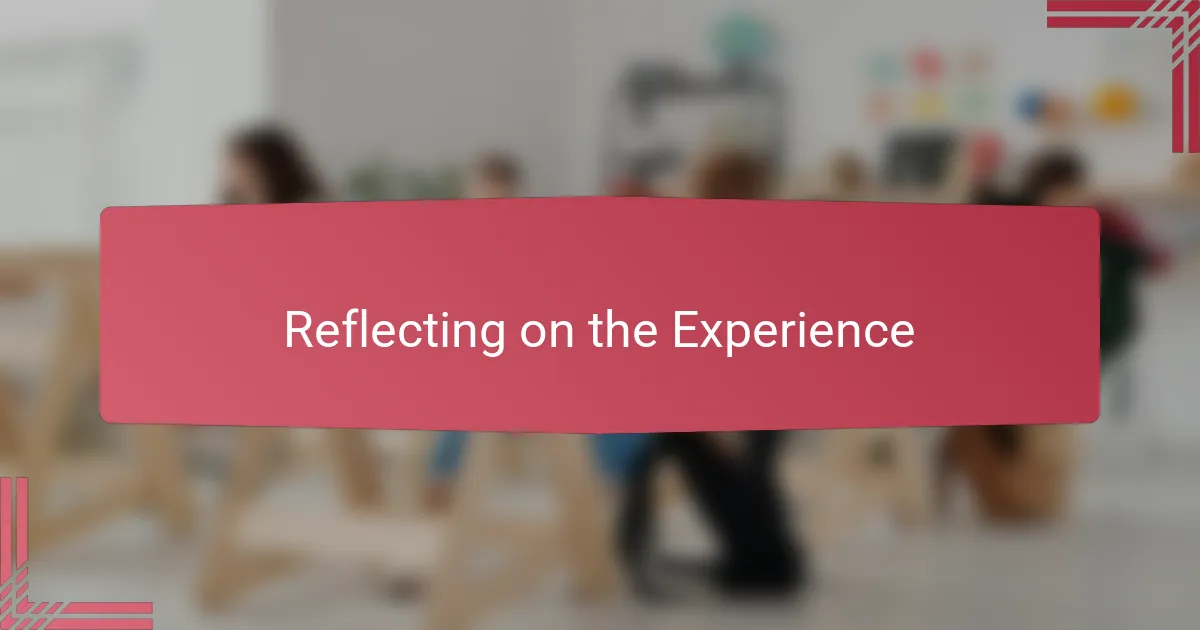
Reflecting on the Experience
Looking back on that first virtual field trip, I felt both relief and pride. It wasn’t perfect—there were moments when screens froze or questions hung in the air—but witnessing students connect so deeply despite the distance made every hiccup worth it. Have you ever experienced that rush of joy when something you carefully planned actually sparks curiosity live, even through a screen?
I also realized how important reflection is after the fact. Taking a moment to ask myself what worked, what fell flat, and what surprised me helped shape future trips into even richer experiences. Isn’t it amazing how looking back can propel us forward?
Most unexpectedly, I noticed how students seemed more comfortable sharing their thoughts from behind a screen. That quiet student who rarely spoke in person suddenly contributed thoughtful insights in the chat. It made me rethink my assumptions about engagement and reminded me that connection can take many forms—sometimes quieter, but no less powerful.